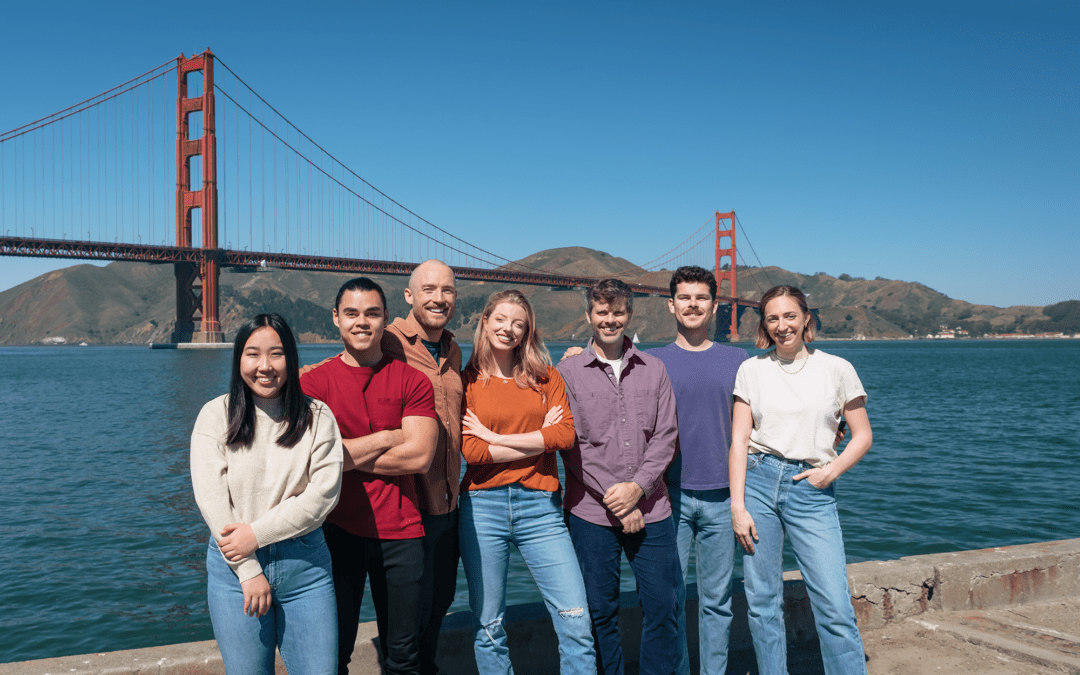In honor of Earth Day, we wanted to highlight Sway, one of the fast-growing teams who occupy a sun-filled corner of our mezzanine. Sway focuses on regenerative design solutions for plastic pollution. Intriguing, right? We asked co-founder and CEO Julia Marsh (pictured center above) to give us some background on how she got started, and explain things in layman’s terms.
What inspired you to create Sway?
Sway was inspired by a provocation: What if plastic could evolve into a material with the capacity to replenish the planet? Imagine a world where plastic packaging, no longer an unavoidable source of pollution, had the potential to regenerate life from sea to soil.
Prior to founding Sway, I spent about a decade as a designer building brand and packaging systems for consumer goods companies. I became frustrated knowing I was directly contributing to plastic pollution. Alternatives to single-use plastics frequently fall short in terms of performance, as well as actually being “better” for the planet. They require special facilities to degrade, or are reliant on resource intensive feedstocks. I became obsessed with so-called “regenerative” feedstocks instead – materials which replenish natural systems rather than extracting from them.
How bad is plastic? (or how and why seaweed is a great alternative!)
Very bad. Every day, 8 million pieces of plastic pollution find their way into the ocean. Plastic waste has been found on the world’s most remote islands, its deepest seafloors, and its highest peaks. Plastic even finds its way into our bodies — you ingest tens of thousands of microplastics every year. According to Our World in Data, packaging material makes up the bulk of plastic waste on our planet, with few sustainable solutions.
While petroleum causes harm at nearly every step of its life cycle, seaweed has the potential to replenish life in its wake. Seaweed is abundant, growing on every coastline in the world with a total area of roughly 7 million km², roughly equivalent in both size and productivity to the Amazon rainforest. Plus, seaweed does not rely on arable land, freshwater, or pesticides to grow. Seaweed farms and forests help slow the effects of deadly ocean acidification, process large amounts of carbon — sometimes up to 20 times more per acre than land forests — and provide habitat and breeding grounds for biodiverse life. Furthermore, seaweed cultivation can provide dignified, climate-resilient employment to coastal communities around the world, many of whom have been harmed by overfishing and acute climate change detriments.
What are the most impactful action(s) members can take in the name of sustainability?
The urgency of the climate crisis is undeniable. Fortunately, there are so many ways you can integrate climate action into your career, regardless of your background or interests. Educators, engineers, artists, lawyers, managers, storytellers, leaders – everyone (!!) can look to the solutions and get going. Some of our favorite resources for inspiration:
- The UN’s Sustainable Development Goals
- Dr. Ayana Elizabeth Johnson’s workplace “Circles” for climate action
- Paul Hawken’s list of tangible regenerative actions you can implement today!
Follow Sway on Instagram to see the latest from this innovative company.

